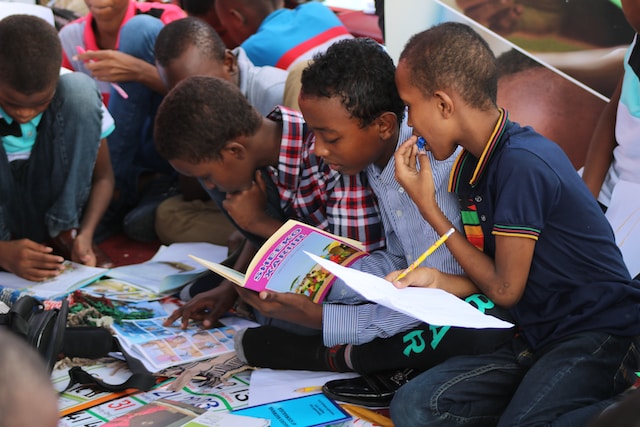- 30 April 2023
- 107
Exploring Diversity in American Literature Through the Lens of Race and Identity

Introduction
American literature is a vast and diverse landscape that reflects the country’s complex history, culture, and identity. From the early works of colonial writers to contemporary voices that explore themes of race, ethnicity, and identity in America today, literature has played a crucial role in shaping our understanding of who we are as a nation. In this blog post, we’ll delve into the fascinating world of American literature through the lens of race and identity. Join us on this journey as we examine how different authors have explored these powerful themes throughout history.
Race and Identity in American Literature
Race and identity have been a significant theme in American literature for centuries. Writers often explore how race shapes an individual’s experiences and relationships, as well as the social structures that exist around them. This exploration has led to some of the most powerful and memorable works in American literary history.
One of the earliest examples of race in American literature is Frederick Douglass’ “Narrative of the Life of Frederick Douglass, an American Slave.” Written by a former slave himself, this book sheds light on what life was like for slaves before abolition. It highlights how slavery stripped African Americans not only of their freedom but also their identities, highlighting the importance of understanding one’s own identity.
Similarly, Toni Morrison’s novel “Beloved” explores how enslavement affected Black women specifically while examining themes such as motherhood and memory through various female characters’ perspectives.
Moreover, writers like James Baldwin examine how intersectionality plays a role when it comes to race and gender issues. His work tackles subjects such as homophobia within racial communities while addressing fundamental topics about blackness.
These are just a few examples that demonstrate why conversations about race should be included more in literary discussions. Race influences human experiences profoundly; thus any conversation or work without acknowledging its impact would be incomplete at best and inaccurate at worst.
Examining the Influence of Race and Ethnicity on Literary Works
Literature is often used as a tool to explore and express the experiences of people from different racial and ethnic backgrounds. The influence of race and ethnicity on literary works cannot be overstated, as authors use their personal experiences to create characters that reflect the diversity of their communities.
Through literature, we are able to gain insight into the perspectives and struggles of individuals from different racial and ethnic groups. Authors use their works to challenge stereotypes, address social issues, celebrate cultural traditions, highlight injustices, and more.
One example of this can be seen in Toni Morrison’s “Beloved,” which explores the trauma experienced by African American slaves. The novel delves into themes such as identity formation in a world that denies blackness authenticity; motherhood in oppressive environments; sexuality under slavery conditions among other things.
Similarly, Maxine Hong Kingston’s “The Woman Warrior” reflects her Chinese-American background through stories about growing up with hybrid identities while dealing with racism or societal pressures for women during her time period.
By examining these literary works through the lens of race and ethnicity, we are able to better understand our shared histories while also appreciating our differences. These texts allow us to empathize with characters who may have vastly different life experiences from ourselves but ultimately reveal relatable human emotions like fear, love or anger.
Exploring diversity in American literature through race and identity allows readers to expand their understanding beyond individual experience toward a wider range of possibilities for humanity’s commonalities.
Conclusion
American literature is a rich tapestry of diverse voices and experiences. From the earliest works to contemporary writings, race and identity have been integral themes in shaping literary discourse. By examining these works through the lens of race and ethnicity, we gain a deeper understanding of their significance as cultural artifacts that reflect on societal norms, values, and beliefs.
As we continue to explore diversity in American literature, it is important to recognize the role of race and identity in shaping our perspectives. By seeking out voices from underrepresented groups and engaging with their stories on an equal footing with mainstream narratives, we can broaden our horizons and foster greater empathy for those whose experiences may differ from our own.
Ultimately, by embracing diversity in American literature – both as readers and writers – we enrich not only ourselves but also our communities at large. So let us celebrate the richness of this tradition by continuing to engage with its many facets – past present –and future!

